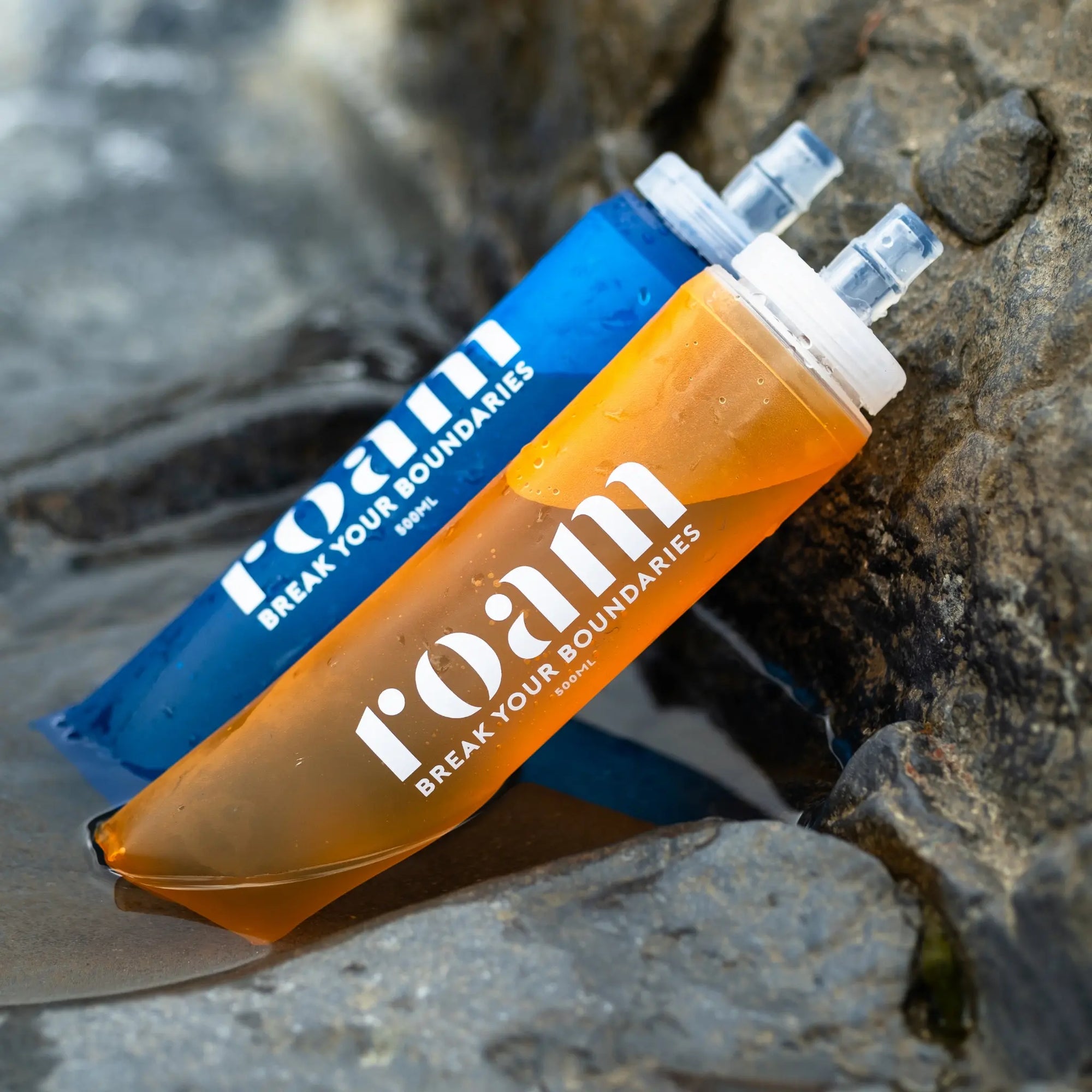What electrolytes (minerals) do I need during exercise?

When you exercise, you sweat out a mix of minerals that carry an electrical charge. These are called electrolytes. Why do they matter? Electrolytes support exercise performance by regulating muscle function, hydrating the body, balancing blood acidity and pressure - and much more.
There are lots of electrolyte hydration products on the market now, with different formulations and doses of various mineral salts. The common minerals you’ll see on nutrition information panels are sodium, potassium, calcium, and magnesium.
But is it really necessary to replace lost electrolytes during exercise?
In this article, we look at each of these minerals and cover:
- What role the mineral plays in your body as an electrolyte
- Common dosages in sports powders and tablets
- Whether you need to replenish the mineral during exercise
- Reading ingredient lists
- Daily needs
Want the TLDR?
Sodium is the most important mineral to replenish during exercise over about 2 hours.
Potassium, magnesium and calcium are less important. You can focus on meeting your daily requirements in your diet, outside of exercise.
Common Electrolytes in Sports Hydration Products
Expand each section to read more about each mineral.
Sodium is the primary mineral you will find in sports drinks, powders and tablets.
What role does sodium play in the body?
Sodium plays a critical role in your body, especially during exercise. Its functions include:
- Fluid Balance: Ensures fluids are correctly distributed throughout your body.
- Nerve Signals: Aids in the transmission of nerve impulses, affecting muscle contractions.
- Muscle Function: Plays a role in preventing cramps by balancing electrolytes.
What is the common dosage in sports products?
Sports products vary widely in their sodium content. Salt chews may provide around 100 mg of sodium per chew. Most electrolyte powders and drinks contain about 400 mg to 1000 mg of sodium per litre.
Some ‘saltier’ varieties contain up to 1,500 mg of sodium per litre, for salty sweaters.
To accurately measure sodium losses in your sweat, you can book a sweat test in a laboratory.
Identifying Sodium in Ingredient Lists
Sodium chloride (table salt), sodium citrate, sodium bicarbonate, sodium carbonate
Do I need sodium during prolonged exercise?
It can be a good idea to consume sodium during prolonged exercise, especially where sweat losses are high.
How much do I need?
It’s a difficult question to answer, because the amount of sodium that we lose through sweat varies greatly – not just between individuals, but also due to changes in your diet and environment.
The general recommendation is to consume about 500 to 1,000 mg of sodium per hour during prolonged exercise (usually over 2 hours).
You may be a very salty sweater – some tell-tale signs may be white salt streaks on your skin or clothes post exercise.
Salty sweaters can lose up to 2,000 mg of sodium per hour. In this case, you may need to aim for about 1,500 mg of sodium intake per hour.
Note that consuming high levels of sodium during exercise can also cause gut distress - so it can become a balancing act between replacing sodium and keeping your guts happy.
It’s not necessary to replace all sodium lost during exercise, but keeping on top of your sodium levels can stave off unwanted effects such as heat stress and muscle cramping.
Sodium’s role beyond hydration
Sodium plays another significant role in how your body handles energy during exercise, thanks to a process called Sodium-Glucose Co-transport.
Sodium-Glucose Co-transport
In your small intestine, a special protein (SGLT1) acts like glue, attaching one glucose molecule to two sodium ions. Together, they pass through the intestinal wall into your bloodstream. Why does this matter? Sodium acts like a magnet, pulling glucose into your bloodstream, so it is readily available to be used by your muscles for energy.
Sodium in our everyday diet
The advice from health organisations to limit sodium intake, typically around 2,000 mg per day, contrasts sharply with the needs of endurance athletes. This doesn’t mean that the guidelines are misplaced but highlights that your body’s needs change when you are exercising for extended periods.
Key takeaways:
- Customise your sodium intake: based on exercise intensity, sweat rate, and environmental conditions. Sodium losses are difficult to estimate without a proper sweat test, but if you are a noticeably salty sweater and/or suffer from muscle cramps, you could try adding a bit more sodium to your hydration during workouts (no more than 1,500 mg / hour).
- Listen to your body: most athletes consume sodium during exercise via a drink. Remember to drink to thirst, not to a schedule, to avoid overhydration or hyponatremia.
- Tip: Regular table salt contains about 40% sodium, 60% chloride. If you wanted to top-up your sodium intake, buy some basic micro-scales from TradeMe or Amazon, and weigh out what you need. Add it to your water, or top up your hydration powder. Easy. (1 gram table salt is about 400 mg sodium + 600 mg chloride).
What role does potassium play in the body?
- Cellular Fluid Balance: Works with sodium to keep fluids in balance within cells.
- Nerve Signals: aids transmission of nerve signals for coordinated muscle movements.
- Energy Use: helps to break down carbohydrates and proteins for energy.
- Heart Function: Helps to regulate heartbeat and blood pressure.
What is the common dosage in sports products?
From 30mg in chews up to 250mg per serve in sports powders.
How do identify it on an ingredient list?
Potassium chloride, potassium citrate, potassium bicarbonate.
Do I need it during prolonged exercise?
Potassium helps to maintain electrolyte balance but is less critical to consume during exercise.
Research suggests that focusing on potassium after physical activity aids in muscle recovery and restores fluid balance.
Potassium in our everyday diet
The National Health and Medical Research Council (NHMRC) in Australia suggest an average daily intake of 3,800mg per day for adults. If you exercise a lot, your needs may increase.
Unlike sodium, which can elevate blood pressure, potassium has the opposite effect, helping to reduce it. Good sources of potassium include vegetables and fruit.
A medium banana contains about 350mg of potassium. Bananas are great in a post-workout smoothie with Roam Protein too! Other potassium-rich foods include tomato, sweet potato, avocados, beets, apricots (fresh and dried), mushrooms, and spinach.
Magnesium is an important mineral, responsible for over 600 chemical reactions within the body. Magnesium can help with relaxation, improved sleep quality, bone health, and more.
What role does magnesium play in the body?
- Muscle Function: supports muscle contraction and relaxation.
- Electrolyte Stability: Helps maintain electrolyte balance for proper cell function.
- Protein Synthesis: Assists in muscle repair and building.
- Heart Function: Important for regulating blood pressure and heart rhythm.
What is the common dosage in sports products?
Anywhere from 6mg to 25mg.
Do I need magnesium during prolonged exercise?
No, it’s not necessary to replace magnesium during exercise.
We lose small amounts of magnesium in our sweat. Sweat typically contains between 0.1 to 0.5mmol/L of magnesium, translating to an upper level of about 12mg per litre of sweat. (Jeukendrup & Baker, 2014).
During exercise, your body adapts by moving magnesium to where it’s needed most, like your working muscles.
Focus on replenishing magnesium after exercise to support recovery. Foods rich in magnesium include nuts (almonds, cashews, pumpkin seeds), and leafy greens.
How do identify it on an ingredient list?
Magnesium lactate, magnesium carbonate, magnesium citrate, magnesium oxide.
Magnesium in our everyday diet.
The Ministry of Health in Australia and in New Zealand recommend a daily intake of 320mg/day for females and 420mg/day for males.
Nuts and seeds are rich in magnesium, as with leafy greens, wholegrains, legumes, dairy products, and tofu.
What role does calcium play in the body?
Calcium plays multiple vital roles, including:
- Bone Health: Gives bones strength and structure.
- Muscle and Nerve Communication: helps nerve cells and muscle fibres communicate so that muscles contract properly.
- Blood clotting
What is the common dosage in sports products?
From 0mg to 30mg per prepared serve.
Do I need it during prolonged exercise?
No, it’s not necessary during exercise. Calcium loss via sweat is low. Studies have shown a range from 0.1 to 1.3 mmol/L, or an average of about 20mg per litre of sweat. (Hoshi et al, 2001; Shireffs & Maughan, 1997)
Given this low loss rate, the focus should be on meeting your overall daily calcium needs rather than specific replacement during exercise.
How do I identify it on an
ingredient list?
Calcium citrate, calcium carbonate, calcium lactate, calcium gluconate.
Calcium in our everyday diet.
The Recommended Daily Intake (RDI) is 1,000mg, with women over 50 and men over 70 years needing about 1,300mg.
Children aged 9 to 11 years need about 1,000mg/day., increasing to 1,300mg during their teens for bone development.
Common sources of calcium include dairy products, leafy greens, and tofu. Vitamin D helps to increase calcium absorption.
You weren’t expecting this one, were you? Chloride isn’t often talked about when it comes to electrolytes.
What role does chloride play in the body?
Chloride is often paired with sodium in the form of sodium chloride (table salt). It’s roles include:
- Fluid Dynamics: Keeps the body’s fluid levels in balance.
- Digestive Acids: A component of stomach acid, aiding in food digestion.
- Nerve Signals: Involved in transmitting nerve signals.
- Acid-base Balance: Maintains the body’s pH levels for normal cell function.
What is the common dosage in sports products?
Hydration products don’t list chloride independently, it’s often included as part of sodium chloride or potassium chloride.
Sodium chloride contains about 40% sodium, 60% chloride.
Potassium chloride contains about 52% potassium, 48% chloride.
Oftentimes, the hydration product will only list the amount of potassium or sodium, not chloride on the nutrition information panel.
Do I need it during prolonged exercise?
Chloride loss via sweat is similar to sodium loss. Because adequate sodium intake usually covers your chloride needs during exercise, it isn’t talked about much.
The upshot is, if you are getting adequate sodium intake via sodium chloride, you will also be meeting your chloride needs.
How do I identify it on an ingredient list?
Sodium chloride (the most common source of chloride), potassium chloride, magnesium chloride (these will have smaller doses).
Is chloride important for hydration?
Yes. Chloride helps balance fluids inside and outside your cells. This keeps them working properly and your body properly hydrated.








